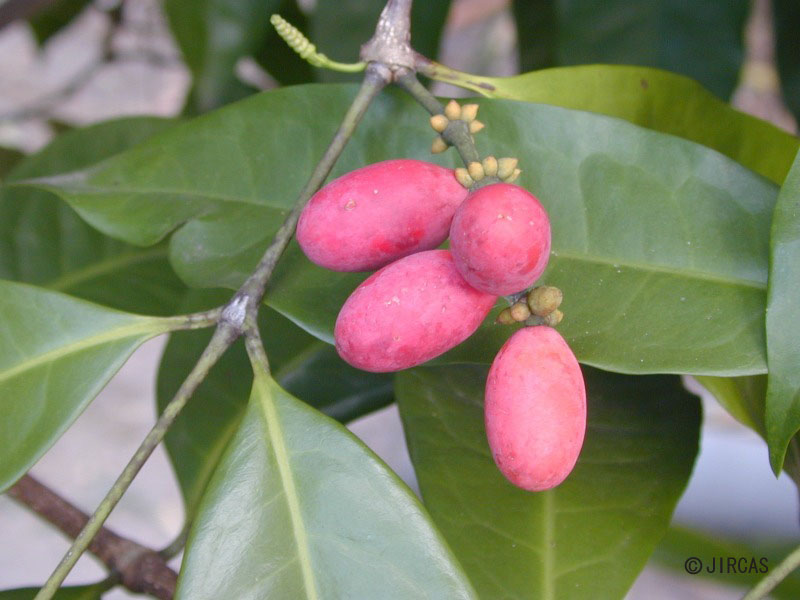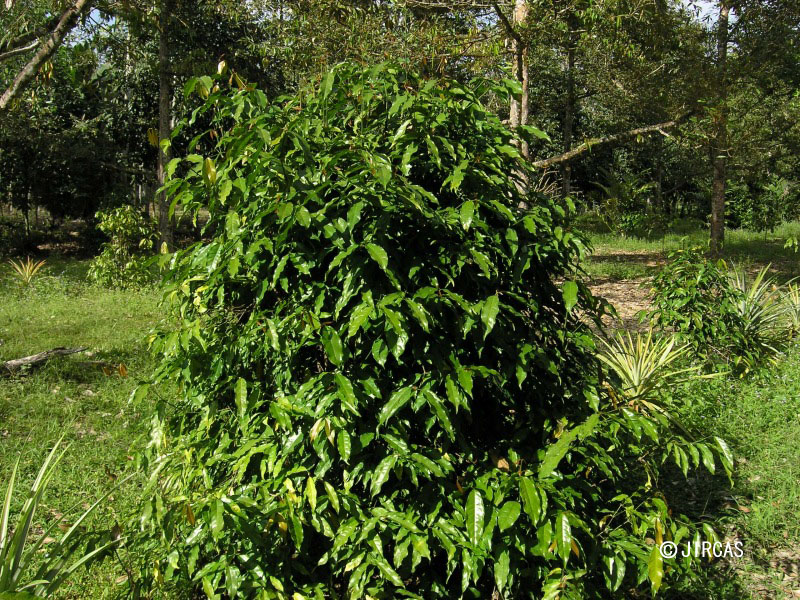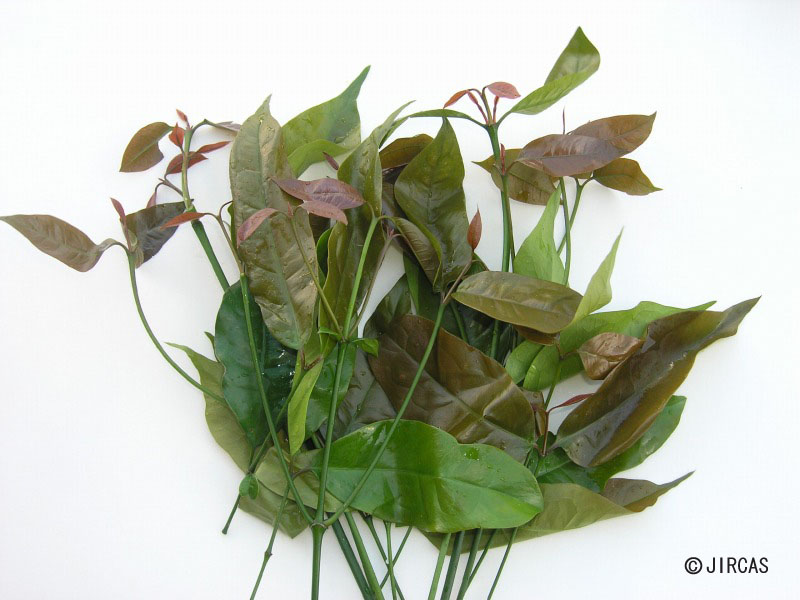Gnetum gnemon L. var. tenerum Markgraf (Gnetaceae)
- Scientific name
- Gnetum gnemon L. var. tenerum Markgraf
- Family name
- Gnetaceae
- Common name
- Gunetsumu (Japanese)
- Local name
- Phak liang
Small evergreen tree or shrub, dioecious. Stem erect, up to 3 m tall, many- branched down to the base, with conspicuous raised rings; branches thickened at base. Leaves simple, opposite, elliptic, 7.5–20 × 2.5–10 cm; lateral veins curved, fused. Inflorescence solitary, axillary, also on older wood, 3–6 cm long, with flowers in whorls at nodes. Female flowers 5–8 at each inflorescence node, oblong, beaked. Fruit nutlike, ellipsoid, 1–3.5 cm long, acute apex, apiculate, almost velvety, yellow, turning red to purple when ripe. Seeds 1 per fruit, large, starchy.
Found in rainforests, at elevations up to 1,200 m. Prefers high soil humidity and light shade. Propagated by seed sowing, air laying, or through root suckers. Planted 2 m apart, often intercropped to provide shade for crops such as durian, rambutan, and Parkia spp. Shoots are harvested regularly to control the size and shape of the bushes.
An important leafy vegetable in southern Thailand. Young leaves are harvested during the rainy season and cooked in vegetable soups or fried with egg. Young leaves contain 75.1 g water, 6.6 g protein, 1.2 g fat, 9.1 g carbohydrates, 6.8 g fibre, 1.3 g ash, 224 mg phosphorus, 151 mg calcium, 2.5 mg iron, and 10889 IU vitamin A per 100-g serving.
An important leafy vegetable in southern Thailand. Young leaves are harvested during the rainy season and cooked in vegetable soups or fried with egg. Young leaves contain 75.1 g water, 6.6 g protein, 1.2 g fat, 9.1 g carbohydrates, 6.8 g fibre, 1.3 g ash, 224 mg phosphorus, 151 mg calcium, 2.5 mg iron, and 10889 IU vitamin A per 100-g serving.






